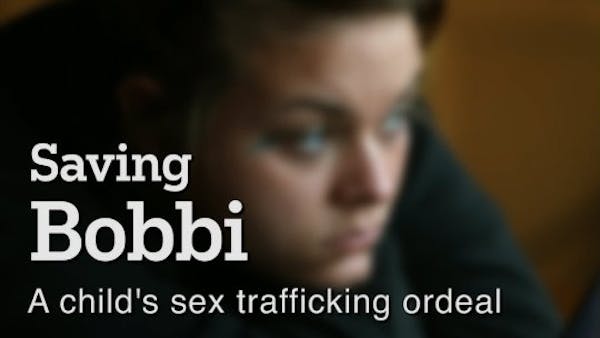A 20-year-old man assaulted and tried to drown a Minneapolis teen to force her to make money selling sex.
A runaway girl was threatened with a gun and forced to turn tricks in a north Minneapolis house.
A pimp threatened to kill a teen's baby if she didn't continue to work for him.
The degree to which traffickers use violence as part of a structured business strategy surprised researchers who on Wednesday are releasing a preliminary study of the business strategy behind the juvenile sex trade in Minneapolis.
Funded by the Women's Foundation of Minnesota and the University of Minnesota Children, Youth & Family Consortium, researchers examined nearly six years of Minneapolis police and Hennepin County district court records, looked at seven years of media reports and interviewed 89 people who work directly with victims.
"I was surprised by how organized and strategic the use of violence in these trafficking operations really is," said Lauren Martin, director of research at the university's Urban Research Outreach/Engagement Center, one of the study's authors. "It's strategic and has a purpose in developing girls as a product for sale. … It degrades the girls' sense of themselves and creates an objectification where girls devalue themselves."
Although many court documents didn't necessarily track violence in such cases, researchers still found evidence of pimps using severe violence and threats against 34 percent of victims.
The 118-page report, "Mapping the Market for Sex With Trafficked Minor Girls in Minneapolis," aimed to examine the trade as an industry, and found sophisticated systems to recruit, retain and market victims to meet demand for sex in varied communities.
The study supports long-held notions about the juvenile sex trade, including:
• Police data show the average age of victims was 15 to 16 for all races except Latino victims; for that group, the average age was 13.
• Sex buyers come from all communities, with the largest portion being white.
• Vulnerable juveniles were targeted, sometimes by peers, in places such as schools, parks, malls, bus stops, parties, treatment facilities and juvenile detention centers.
• Traffickers often targeted runaways, homeless kids, teens living in poverty, youth with cognitive delays or chemical use or history of abuse.
• Traffickers typically faked romantic interest in a juvenile, then used sexual, physical, psychological and verbal violence to prevent the juvenile from resisting. Rape and gang rape was sometimes used in a "sorting-out process" to determine which girls could be marketed to various types of clients.
• There was an overrepresentation of communities of color as facilitators and victims. Poverty-stricken neighborhoods were among the hardest hit.
Researchers also wrote that, besides the popular notion of a pimp controlling one or more victims, other marketing structures exist. Pimps sometimes network with each other to trade victims, the study says. Other operations involve a complex, formal hierarchy which researchers called the "corporate model," where girls are categorized by appearance and demeanor and work for different classes of clients. Sometimes the categorization occurs at parties where they may be raped as part of an "audition," the study said.
Girls deemed to be the best moneymakers are typically reserved for closed sex buyers' networks, where traffickers prescreen known buyers who sometimes pay $500 an hour. Lesser moneymakers are sold online; so-called "bottom feeders" are used in gang-related parties, the study said.
Researchers said they will continue to study the juvenile sex trade to better understand how to combat the market.
"It's very structured, very strategic," co-author Alexandra Pierce said. "We were aiming at giving policymakers and law enforcement information that can help them disrupt those processes … that's our goal."
Some suggested prevention strategies listed in the study include changing social culture among males, raising awareness about peer recruiting, training teachers on prevention efforts, and strengthening opportunities for personal and professional development for those 12 to 17 years old.
Pam Louwagie • 612-673-7102

Showdown over DEI issues won't lead to Anoka-Hennepin shutdown, superintendent says

